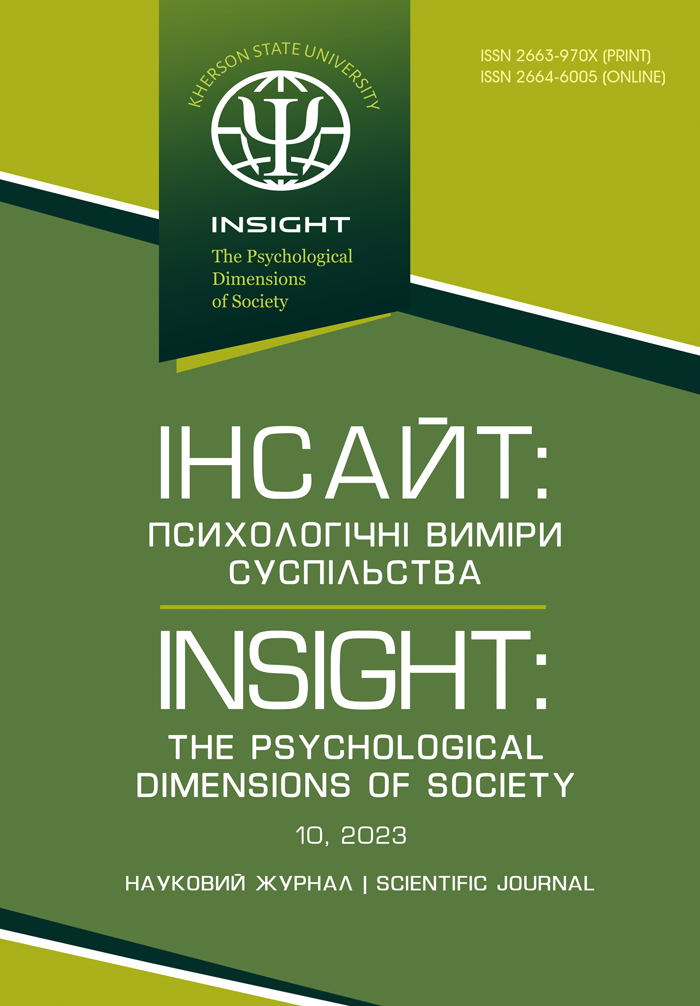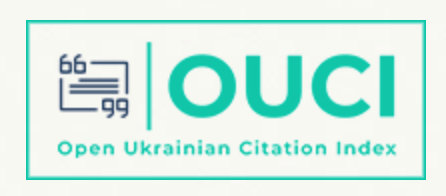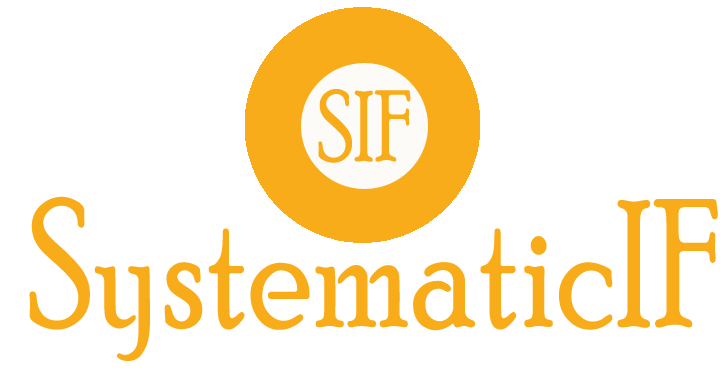Results of Adaptation of the Methodology for Studying the Acculturation of Migrants by J. Berry on the Ukrainian Sample
Abstract
The article highlights the modern approach to the studyof acculturation processes on the example of Ukrainianforced migrants. The purpose of the study is to adaptthe English version of the Acculturation Questionnaireby J. Berry to Ukrainian. Methods. The translationof acculturation methods from English into Ukrainianwas carried out with the participation of two independentexperts who helped to translate and evaluatethe quality of the final version of the methodology.The study involved 502 respondents, migrants fromUkraine, who currently reside in the United Statesdue to war. The survey was conducted on the basisof RedCap. Results. Correlation analysis revealedleading indicators, with the highest correlation coefficientsbeing observed for the “integral safety indicator”and various safety subcategories (r=.807, p < .01; r=.767, p < .01; r=.787, p < .01). The internal consistencyof the questionnaire ranged from α=.793 for“sociocultural maladaptation” to α=0.934 for the “integralsafety indicator”, with a test-retest reliability coefficientof (r = .815, p < .01). Factor analysis of the dataidentified four factors, with the strongest factor containingindicators of acculturation strategies (marginalization,separation). The second factor combineddepression level, sociocultural maladaptation, life satisfaction,and anxiety level. The third factor includedcomponents related to cultural, economic, and physicalsecurity. Finally, the fourth factor consisted of a singlecomponent-self-satisfaction. Construct validity wasassessed by correlating acculturation indicators withscales from other psychodiagnostic methods, showingcausal relationships with indicators of acculturation.Discussion and conclusions. Summarizing the resultsof adapting J. Berry’s acculturation methodology, it isimportant to note that the Ukrainian-adapted versionof this methodology exhibits high psychometric characteristics,such as validity and reliability. This makesits use possible in future studies of acculturation processesamong Ukrainian migrants.
Downloads
References
A critical examination of acculturation theories. (n.d.). Retrieved from https://ojs.uwindsor.ca/index.php/csw/article/download/5762/4704?inline=1
Berry, J. W. (2006). Mutual Intercultural Attitudes in Plural Societies: The MIRIPS Project (Unpublished data). Psychology Department, Queen’s University, Kingston, Canada. https://www.wgtn.ac.nz/cacr/research/mirips
Connor, K. M., & Davidson, J. R. (2003). Development of a new resilience scale: The Connor-Davidson Resilience Scale (CD-RISC). Depression and Anxiety, 18(2), 76–82. https://doi.org/10.1002/da.10113
Fox, R. S., Merz, E. L., Solórzano, M. T., & Roesch, S. C. (2013). Further Examining Berry’s Model: The Applicability of Latent Profile Analysis to Acculturation. Measurement and Evaluation in Counseling and Development: The Official Publication of the Association for Measurement and Evaluation in Counseling and Development, 46(4), 270–288. https://doi.org/10.1177/0748175613497036
Gleeson, C., Frost, R., Sherwood, L., Shevlin, M., Hyland, P., Halpin, R., et. al. (2020). Post-migration factors and mental health outcomes in asylum-seeking and refugee populations: A systematic review. European Journal of Psychotraumatology, 11, 1–13. https://doi.org/10.1080/20008198.2020.1793567
Grzymała-Moszczyńska, H., & Różańska-Mglej, M. (2023). Challenges for the Mental Health of Refugee Artists: Perspectives of the ADAPT Model. International Journal of Environmental Research and Public Health, 20(9), 9. https://doi.org/10.3390/ijerph20095694
Hasanovi, M. (2020). Migration and acculturation: what we can expect in the future. Psychiatria Danubina, 32(SI 3), 386–395. https://pubmed.ncbi.nlm.nih.gov/33030459/
Kiylioglu, L., & Wimmer, H. (2015). The relationship between immigration, acculturation and psychological well-being the case of Turkish youth in Austria. Nesne Psikoloji Dergisi, 3(5). https://doi.org/10.7816/nesne-03-05-01
Kuzikova, S. B., Zlyvkov, V. L., & Lukomska, S. O. (2023). Traumatic experience of residents of the de-occupied territories of Ukraine. Insight: the psychological dimensions of society, 9, 228–243. https://doi.org/10.32999/KSU2663-970Х/2023-9-13
MIRIPS: DESCRIPTION OF THE PROJECT Contents. (2013). https://api.semanticscholar.org/CorpusID: 201072406
Oviedo, L., Seryczyńska, B., Torralba, J., Roszak, P., Del Angel, J., Vyshynska, O., et al. (2022). Coping and Resilience Strategies among Ukraine War Refugees. International Journal of Environmental Research and Public Health, 19(20), 13094. http://dx.doi.org/10.3390/ijerph192013094
Pleskach, B. (2020). Diahnostyka sotsiokulturnoi adaptatsii, modyfikatsiia metodyky Dzh. Berri [Diagnostics of sociocultural adaptation, modification of J. Berry’s method]. In Stratehichni napriamy rozvytku nauky: faktory vplyvu ta vzaiemodii: Materialy Mizhnarodnoi naukovoi konferentsii (22 travnia, 2020 rik, m.
Sumy, Ukraina, MTsND) – Strategic directions of science development: factors of influence and interaction: Materials of the International Scientific Conference (May 22, 2020, Sumy, Ukraine, MCND). Academia.edu.https://www.academia.edu/52856476/
Redfield, R., Linton, R., & Herskovits, M. J. (1936). Memorandum for the Study of Acculturation. American Anthropologist, 38, 149–152. https://doi.org/10.1525/aa.1936.38.1.02a00330
Sam, D., & Berry, J. (2006). The Cambridge handbook of acculturation psychology. New York: Cambridge University Press. pp. 27-42. https://doi.org/10.1017/CBO9780511489891.006
Schmitz, P. G., & Berry, J. W. (2011). Structure of Acculturation Attitudes and their relationships with personality and psychological adaptation: A study with immigrant and national samples in Germany.
In F. Deutsch, M. Boehnke, U. Kühnen, & K. Boehnke (Eds.), Rendering borders obsolete: Cross-cultural and cultural psychology as an interdisciplinary, multi-method endeavor: Proceedings from the 19th International Congress of the International Association for Cross-Cultural Psychology. https://scholarworks.gvsu.edu/iaccp_papers/80/
Shkolina, N. V., Shapoval, I. I., Orlova, I. V., Kedyk, I. O., & Stanislavchuk, M. A. Wagnild, G. M., & Young, H. M. (1993). Development and psychometric evaluation of the Resilience Scale. Journal of Nursing Measurement, 1(2), 165–178. https://pubmed.ncbi.nlm.nih.gov/7850498/Ward, C. (1999). The measurement of sociocultural adaptation. International Journal of Intercultural Relations, 56, 1–19. https://doi.org/10.1016/S0147-1767(99)00014-0
Zhu, J. Q., & Li, H. (2016). The development and validation of an acculturation scale: An empirical study based on experimental data. South African Journal of Business Management, 47, 1–8. https://doi.org/10.4102/sajbm.v47i1.47
Authors who publish with scientific journal agree to the following terms:
• All scientific papers may be freely copied and distributed on any medium and in any format, provided that the references to the initial data of the scientific work are indicated.
• Authors retain copyright and grant the journal right of first publication with the work simultaneously licensed Creative Commons Attribution License .
• Authors are able to enter into separate, additional contractual arrangements for the non- exclusive distribution of the journal’s published version of the work (institutional repository, your website, monograph), with an acknowledgement of its initial publication in this journal.





































